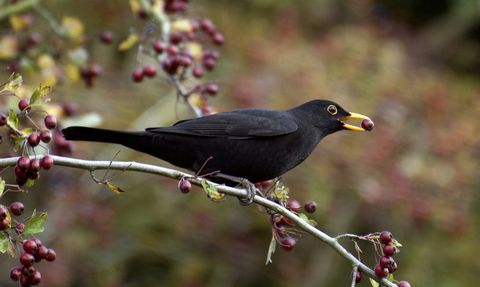
(C)Zsuzsanna Bird
Wildlife Advice
Sick, injured, or dead animals
Derbyshire Wildlife Trust does not offer a general service for the care and rehabilitation of wildlife. We also do not offer any services related to the discovery, reporting, or disposal of dead animals, but our advice pages will help you know what to do if you find one.
Wildlife Crime
Wildlife crime is any activity that goes against legislation protecting the UK's wild animals and plants. It can cause pain and suffering to animals, push species closer to extinction, and can be linked to other serious crimes like firearms offences and organised crime.
Derbyshire Police have more information about what is wildlife crime here.
If you think a wildlife crime is being/has been committed then contact Derbyshire Police
As a charity we have no legislative authority or enforcement powers and if you think a wildlife crime has been undertaken you should contact the wildlife crime officer = by calling 101 or call Crimestoppers anonymously on 0800 555 111.
FAQ's answered
I’ve found a dead badger in the road who do I tell?
If you find a dead badger on a road you need to inform your district, borough or city council for disposal, but please also let us know for our Records Centre so we can monitor badger distribution across the county: dbrc@derbyshirewt.co.uk Giving as much detail as possible regarding the location.
Bat Advice
Bats are very small and can sometimes come down your chimney, roost in plant pots or find themselves inside your house by accident. If a single bat has found its way into a building by accident you can open the windows at dusk and it should find its way out again. Alternatively follow the advice on this page from the Bat Conservation Trust: Assess the situation - Bats in need of rescue - Bat Conservation Trust
All bats and their roost sites are fully protected by law, even if bats are not present all the time. If you have bats in your roof, their access must not be impeded.
If any problems are encountered with bats, or if any repair work to the roof is necessary, advice must be sought prior to any works being started.
Advice - Bat Conservation Trust (bats.org.uk)
If you’d like to encourage bats to visit your garden you can plant flowers to attract moths which then create a perfect meal for visiting bats: How to attract moths and bats to your garden | The Wildlife Trusts
Injured Bird of Prey
If it is dead: it may have died of natural causes or it may have been killed illegally) eg by poisoning, shooting or trapping. If you suspect it has been illegally killed (eg there is a snare, trap or a dead rabbit/bird nearby or it is in on ground used for game shooting) do NOT disturb the crime scene – instead take photos and contact either the RSPB Investigations team or the local police (ask for a wildlife crime liaison officer).
If it is alive: Unless you have experience of handling larger birds do not do this yourself – contact a specialist organisation to come and rescue the bird:
Such a bird may be a falconer’s bird – if so it will have jesses/straps etc. and possibly a number for its owner….best leave the bird where it is. The owner will find it if its tag is working.
If it is a truly wild bird it may have nothing or perhaps a metal ring on its leg/s or even a wing marker or small tag on its back.
The bird may be injured due to being shot/trapped or be sick due to poisoning. Again, don’t touch it but do take photos, check if anyone is around/take car reg numbers etc. but don’t put yourself in danger.
Contact National Raptor Rescue (08702 410609) or if you feel a wildlife crime make have occurred report it to 101.
Fox Advice
In urban and semi-urban areas foxes can often be found visiting or even living in gardens. Foxes are generally very docile and will avoid confrontations with humans unless provoked, threatened or cornered. They also do not want to fight with dogs or cats as they are more likely to come off worse.
If you wish to deter foxes the best thing is to check your boundaries for where foxes enter your garden and block these up where possible. You may also need to make your garden less attractive to a fox for a while – so remove any pet feeding areas in the garden, stop using natural fertilisers (such as bonemeal, blood or fish based fertilisers) and block up entrances to gaps under sheds or decking.
If you are concerned about the well-being of a fox visiting your garden because its fur looks patchy you can contact another organisation for help (foxes are prone to mange which is caused by parasitic mites burrowing under the skin making the fox appear at best patchy with bald spots and at worst with major fur loss and wandering distressed at any point of the day). To help foxes in this situation the best thing to do is to contact a specialist organisation such as Fox Guardians or The Fox Project: How can I help a fox with mange? - Fox Guardians





